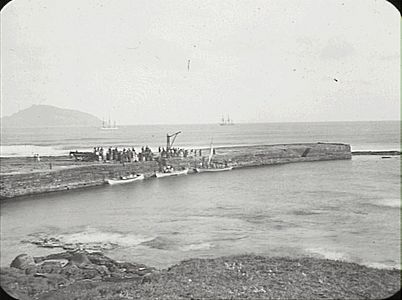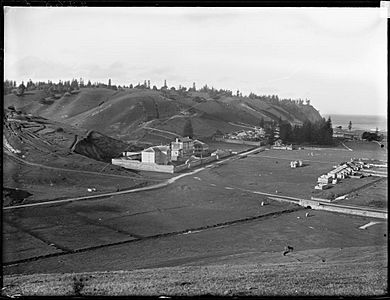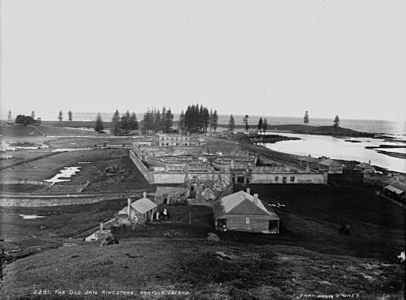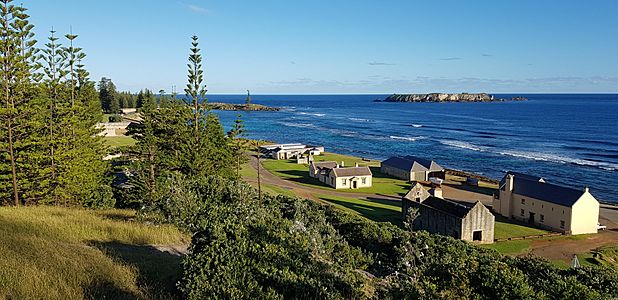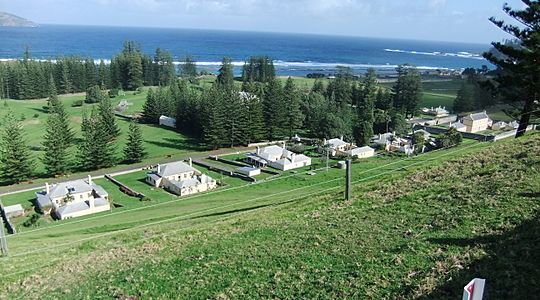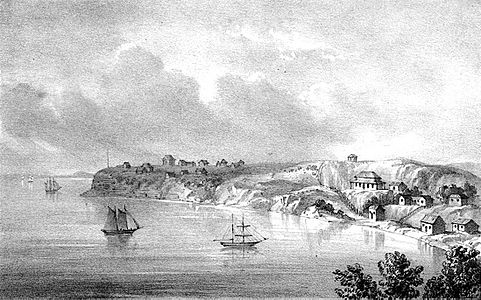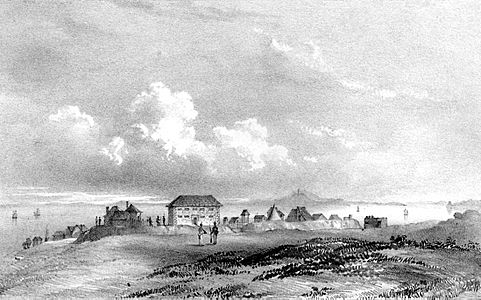Henry Williamson Lugard facts for kids
Lieutenant Colonel Henry Williamson Lugard (born July 10, 1813 – died November 30, 1857) was a talented military engineer. He was part of the Corps of Royal Engineers, a special group of soldiers who build things. Henry Lugard worked on many important projects. He built military bases, prisons, and public buildings in places like New South Wales and Norfolk Island. He also worked in New Zealand and Ireland. Later, he became the main engineer for the China Expedition in 1857, based in Hong Kong.
Quick facts for kids
Henry Williamson Lugard
|
|
|---|---|
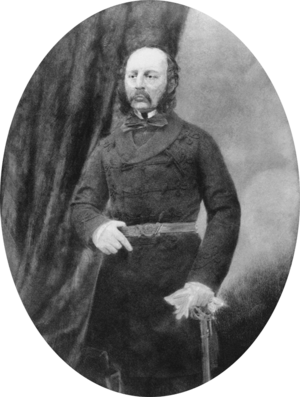
Henry Lugard
Mitchell Library, State Library of NSW |
|
| Born | 10 July 1813 Chelsea, Middlesex, England |
| Died | 30 November 1857 (aged 44) Victoria, Hong Kong |
| Buried |
Plot 20/17/1, 香港墳場 Hong Kong Cemetery, Happy Valley, Hong Kong
|
| Allegiance | |
| Branch | Board of Ordnance British Army |
| Years of service | 1832–1857 |
| Rank | Lieutenant Colonel |
| Service number | 628 |
| Unit | Corps of Royal Engineers |
| Commands held | CRE, Limerick District, 1846 CRE, Dublin District, 1847 CRE, Hong Kong, 1857 |
| Campaigns | China Expedition, 1857 |
| Relations | Edward Lugard (brother) Frederick Lugard (nephew) |
Contents
Henry Lugard's Early Life and Training
Henry Williamson Lugard was born on July 10, 1813, in Chelsea, London. He was one of seven children. His father, John Lugard, was a soldier who had been a prisoner of war. He later became the Secretary and Adjutant of the Duke of York's Royal Military School. This school cared for and educated orphans of British soldiers.
Henry Lugard trained to become an engineer at the Royal Military Academy, Woolwich. He studied there from 1827 to 1831. Some famous teachers were at the academy during his time. These included Michael Faraday, who taught chemistry.
A Military Engineer's Career
Starting in England
Henry Lugard became a 2nd Lieutenant in the Corps of Royal Engineers in 1832. He was 18 years old. For several years, he worked with the Royal Artillery in Chatham, Kent. Britain needed military engineers for its colonies in Australia. So, in 1835, an engineering group was formed in Sydney, New South Wales. Lieutenant Henry Lugard was assigned to this group.
Building in New South Wales and Norfolk Island
Lugard sailed to Sydney on a convict ship called Hive in 1835. The ship accidentally ran aground on a dark night. Henry helped set up a camp for the survivors on the beach. He built shelters and organized supplies. They were later rescued and arrived in Sydney.
After being promoted to lieutenant, Lugard went to Newcastle, New South Wales. This was around 1836. He worked as an architect and supervisor there. He helped build new military barracks and other public works. In 1837, he also designed police barracks in Dungog.
-
Kingston, Norfolk Island.
Photo: Kerry and Co, Sydney, c. 1890
Powerhouse Museum -
The ruins of New Gaol, 1847, built on Lugard's plans, 1839.
Photo: Kerry and Co, Sydney, c. 1890
Powerhouse Museum
In 1838, Lugard went to Norfolk Island. This island was a penal settlement, a place where prisoners were sent. He helped plan a new prison and other buildings for the convicts. At Kingston, he built a landing pier at the harbor entrance. He also designed a new prison with a central watchtower. He planned improvements for other buildings too.
One time, some prisoners tried to escape by boat. Lugard led a chase with soldiers. They caught the escapees about two miles out at sea. The prisoners surrendered and were brought back.
Lugard returned to Sydney in 1839. He helped install cannons to defend Port Jackson. In 1840, he designed new prison cells. He also showed great bravery during a large fire in Sydney. He helped contain the fire, which saved many buildings. For his efforts, he received a silver cup.
Engineering in New Zealand
In August 1840, Lugard was sent to New Zealand. His job was to survey the islands for military purposes. He also had to build military and convict facilities. He arrived with soldiers who would help with the construction.
The first capital of New Zealand was Russell. Lugard and his team built temporary barracks and officers' quarters there. They used local materials like saplings. Soon after, the capital moved to Auckland. Lugard then designed and helped build Auckland Barracks, also known as Fort Britomart.
The fort was built on a high piece of land. Lugard planned quarters for officers and many soldiers. He also designed a hospital and a mess hall. The main barracks building was made of stone. It was a two-story building with small openings for defense. The stone came from Maungawhau / Mount Eden, about two miles away. Lugard left New Zealand in 1842, leaving his replacement to finish the work.
Back in New South Wales
Lugard returned to Sydney in April 1842. He married Margaret Anna McHenry in Parramatta. After about 8.5 years in Australia and New Zealand, Lieutenant and Mrs. Lugard sailed back to London in 1844.
Working in Ireland
Lugard was promoted to 2nd Captain in 1844. He settled in Limerick, Ireland. He became the Commanding Royal Engineer for the Limerick District in 1846. Then, in 1847, he took charge of the Dublin District. He continued to rise in rank, becoming a Lieutenant Colonel in 1855.
During the Crimean War (1853–1856), new military camps were needed. Lugard helped plan and design a large camp for 10,000 soldiers in Curragh, Kildare. This camp was important for training troops. Lugard also wrote a detailed report about this project.
Final Assignment in China
In 1857, Lugard was appointed the Commanding Royal Engineer for the China expedition. This force was gathering in Hong Kong. However, a rebellion in India meant that many troops meant for China were sent to India instead.
Lugard was concerned because his engineers didn't have enough trained sappers (soldiers who do engineering work). He urged that more sappers be sent to Hong Kong. One of his lieutenants trained a group of volunteer sappers. They became very useful. While preparing for operations in Canton, Henry Williamson Lugard sadly died on November 30, 1857. He was 44 years old.


